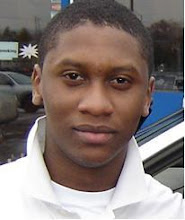I was discussing this class with a friend of mine this weekend, and he volunteered to send me a document from the World Bank that outlines what they believe are the key success factors in building knowledge capacity in African countries. According to the World Bank, there are 5 key factors in evaluating the knowledge transfer process:
Form: knowledge can be broadly classified into its two basic forms: explicit (i.e., codified); and
tacit (i.e., the know how that resides ‘between the ears’ of the knowledge holder).16 The latter
is much more difficult to exchange, and may require different transfer platforms. By looking at
knowledge only in its explicit form, one runs the risk of underestimating the true effort required
to transfer knowledge. Explicit knowledge can be passed on relatively easily through a variety of
print and electronic tools. The transfer of the associated tacit dimension, however, typically requires close and often lengthy human interaction. For tacit knowledge to be exchanged effectively, people need to spend time together (i.e., have ‘patience’), develop trust in each other (i.e., ‘listen and hear’), learn more about each other’s contexts (i.e., have ‘empathy’) and jointly facilitate conversions of knowledge between tacit and explicit forms (i.e., be ‘flexible’ and open to ‘adaptation’). Without this comprehensive knowledge transfer, an adopter’s ability to understand, replicate or exploit new knowledge is severely constrained. Whether in tacit or explicit form, the essential element of knowledge transfer is its content.
Direction: the knowledge transfer process can be viewed in two basic directional flows: one-way (i.e., knowledge moves in one direction from the provider to the recipient); or two-way (i.e., a product of a learning exchange between the provider and the recipient). Although the former may be the dominant direction of knowledge flow during a transfer process, the successful adoption and implementation of such knowledge is highly dependent on the bi-directional flow between the provider and the recipient. Without two-way communication, which is predicated on a learning mind-set, there exists only a ‘strategy of hope’, whereby the provider generates ‘useful’ potential applications in the hope that they will eventually be taken up by some recipient.
Diversity: the more people/countries differ from each other in terms of levels of education, environment, culture, etc., the more potential exists to learn from each other. At the same time, the more people/countries differ, the more problematic it becomes for them to communicate or understand each other. This sometimes could lead to the complete breakdown of a knowledge transfer attempt, unless the participants come to the process with a mindset that is based on ‘empathy’, ‘humility’, ‘curiosity’ and willingness to try new approaches that may be out
of the box of the ‘conventional wisdom’.
Targeting: the knowledge transfer process ultimately involves people and institutions. Targeting the right people and the right organizations (and the right individuals within those organizations) is a very important part of the puzzle. This has implications for how Bank staff disseminate knowledge products (e.g., Economic and Sector Work—ESW), and whether the dissemination process is effective in reaching the right people at the right time in the right form. For example, an analytical report may make sense to a counterpart in a ministry, but it may not have an impact on a village leader unless the findings are synthesized (and sometimes translated into the local language) to make them comprehensible to the recipient. This has implications for the way one monitors and evaluates the outcome/impact of the knowledge products.
Sequencing: understanding capacity constraints and knowledge needs, and responding effectively to these needs involves trade-offs in terms of what to do (i.e., designing nuts and bolts procedures for knowledge transfer) and when to do it (i.e., sequencing the provision of such support), and how to link this to the process of institutional/sectoral development.
There are a lot of other interesting things in the World Bank report which I will happily share with you folks, as soon as I am done reading it.
Subscribe to:
Post Comments (Atom)

1 comment:
Very insightful.
World Bank appears to be making similar impacts in the South America too with KM.
Post a Comment